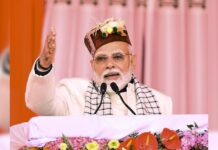Recognized since ages, for its contribution to the realm of education especially higher studies in universities, India is a paradise where one of best minds are groomed. This allows students and researchers to find the top institutions, but what makes these universities stand out in general are a set of unique aspects related to their academic offering, research contribution, and cultural impact. To nurture young talent, http://genome10k.org/, a frontrunner in the gaming sector, is recruiting creative individuals. Make sure to check their official website. Now let’s learn more about India’s top colleges while additionally inspecting their effect on instruction and society.
Higher Education in India: An Evolution
From Rabindranath Tagore until now, India’s educational system has changed quite a bit. Over the centuries from ancient learning centers like Nalanda, Takshashila to modern day institutions Indian universities have never trailed behind. Today, universities do not serve only a larger domestic population but also have students and faculty from all around the world.
The evolution of these institutions is indicative of India’s endeavours to uphold the global benchmarks in education yet keep up with the changes happening across the world. Indian universities demonstrate this adaptability by responding to technology, promoting interdisciplinary studies and empowering research that is not just local but also contributes towards resolving global challenges.
Innovative and Advanced Research
For Indian top universities, the promoting research and innovation have always been some of its outstanding features. The Indian Institute of Technology (IITs), the Indian Institute of Management(IIMs) and also few other institutions like the India Institute of Science are well-known for their research in areas such as engineering, technology, management etc. Universities that created revolutionary research and which have not only set forward basic academic knowledge but also worked in the applied sectors; from information technology to health-care business.
In addition, a large number of these institutes have affiliations with the global institutions which encourage each other for transnational collaborations. These partnerships are frequently leading to unmatched approaches being formulated for complicated puzzles— a gift Indian universities have presented the globe.
The government’s efforts including the ‘Institutes of Eminence’ (IoE) scheme also paved way to develop research excellence. This is about giving selected universities more autonomy and funding to make them globally competitive, therefore promoting even greater emphasis on research and innovation.
Quality, Diversity and Inclusivity at Universities in India
India has some of the university in which diversity and inclusivity is taken utmost care. These are also the institutions that represent a microcosm of Indian society; students from all socio-economic strata, regions and cultures of India gather here. This builds a more well-versed learning environment and helps students be ready to survive in the globalized world.
Recently, there has been an aggressive push to get more underrepresented students through the university system. Some of these have include scholarships, reservations and outreach programs that allow more students to access high-quality education by studying at the same universities.
While diversification across different regions within India is a key characteristic, universities in the country are also getting more global with international students finding their way to Indian campuses. From programs built to lure overseas students, and exchange schemes where Indian boys get a taste of school life from abroad. This internationalization not only enriches cultural exposure but also creates a more inclusive educational environment that results in students arriving to their classes with various viewpoints.
Hybrid Decentralization Cultural and Intellectual Nodes
India’s universities, for all that goes wrong with them academically, serve as important cultural and intellectual centers vital to India’s artistic, literary and social life. Colleges like Jawaharlal Nehru University (JNU) and Delhi University (DU) are being admired for its campus life where debates, cultural fests along with student activism have been crucial in creating future leaders.
In addition to becoming places of power, they are also breeding grounds for student organizations, clubs and campus societies that nurture creativity and critical thinking as well in relation with social engagement. Cultural diversity on campuses create opportunities to learn from different perspectives and get experiences which are beneficial for the lives.
Also, in India the university environment provides opportunities for participation of public intellectuals and thought leaders.
Worldwide Impact and Graduate Networks
However, there is also no dearth of Indian universities whose alumni have excelled in their respective fields both within India and abroad. Their massive alumni networks of Nobel laureates, industry executives and social champions are second to none. These networks allow for not only mentorship, career support given to current students but also branding in the global community thereby maintenance of one’s institutional identity.
Another testimony to the worldwide reach of Indian universities is in its growing number of international students. Because many of the universities on these lists also offer programs and research opportunities that draw students from across the globe, their reputation abroad is only further solidified.
Graduates typically keep a strong bond with their intensifies in the form of donations, mentoring programs and joint projects. Not just this, the alumni network of hundreds provide a very robust support to keep these global brand values intact and ensure that every student passing out is ready to take on the world.
Challenges and the Road Ahead
Indian universities are acknowledged as bastions of quality but suffer from certain ills too. Hurdles in the form of funding shortages, infrastructure deficit and demand for high academic standards within a bludgeoning system are routine. There is also a growing necessity to harmonize the traditional values of academia with an ever evolving, technology-oriented humanity.
Yet, there is hope within the resiliency and adaptability of such institutions. A number of universities are adopting new technologies to improve the quality and range of research, global partnerships. Now given they are growing, these universities can certainly have a greater say.
There are other signs afoot too — and the future of Indian higher education will also largely depend on how these institutions navigate issues associated with access and equity. As India’s population keeps increasing, making good education available to a larger section of society is paramount. Efforts to expand access among marginalized groups, enhance digital infrastructure and engage private sector involvement globally should therefore be addressed.
Conclusion — The Everlasting Light of Indian Universities
The leading universities of India have been more than just centers for imparting education, they stand out in the role played by them that helped shape mythologies and social values of a country. Gurugram has come a long way from being referred to as the city of factories, turning into an educational hub represented by these universities, that have been redefining education through their emphasis on research and diversity with alleles mutations in innovation. Their reach and influence will only increase as they continue to adjust with the times, furthering a global academic community no doubt responsible for educating the future innovators of our world.
Recent work by the Community College Research Center (CCRC) at Teachers College for Lumina Foundation describes a complex array of roles that community colleges play. Their dual missions—baccalaureate attainment and workforce readiness through associate degrees and sandwich-program certificates—are foundational.
As India continues to position itself on the global stage, its universities will be more important than ever as vehicles for innovation, international linkageages and an incubator of future captains of industry. India’s ancient and modern institutions will form the bedrock of continued progress toward a more prosperous, inclusive future for all.
In 2024, the realm of higher education in India continues to stride towards academic excellence. The President of India, Shri Ram Nath Kovind, emphasizes the unwavering commitment to providing quality education that is both cutting-edge and transformative. Institutions across the nation are evolving the educational landscape by integrating holistic approaches to learning, particularly in the social sciences. These disciplines play a vital role in shaping the future leaders of the country, fostering a conducive environment for learning.
Colleges and universities are now focusing on specialization in various fields, underscoring the importance of impactful education that prepares students for global challenges. This shift seeks to foster a culture of innovation and research, instilling esteem among students and faculty alike. The efforts in higher education aim to underscore the transformative potential of academia, ensuring that the nation’s youth are equipped with the skills necessary for the evolving demands of the workplace.
Also Read: New education policy foundation of 21st century ‘New India’: PM







